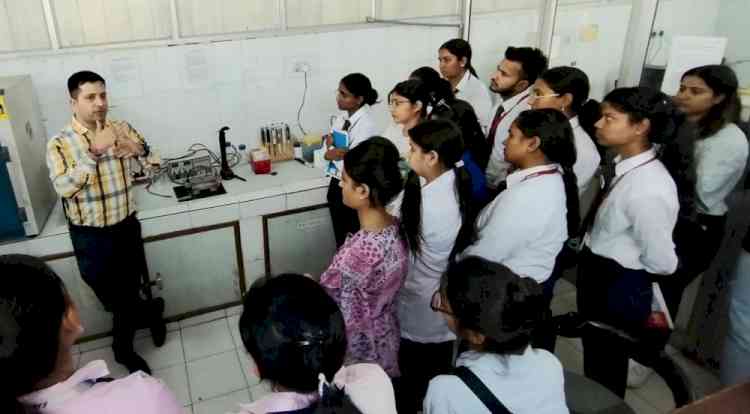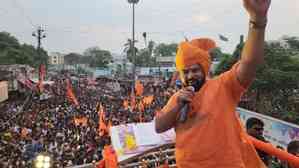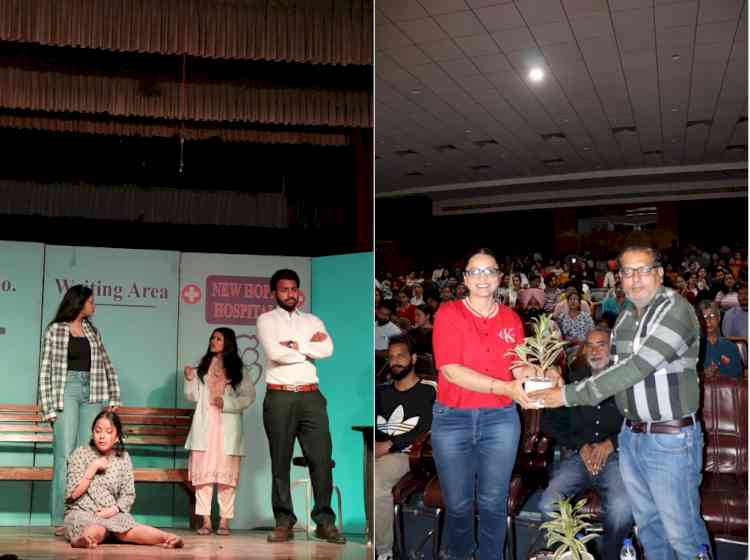Unbridled Imports from China distorting in the local value chains for Solar and LED sectors
Author(s): City Air NewsGandhinagar: India is moving towards adoption of sustainable development and green energy solutions. Solar and LED technologies are the key to sustainable development and green energy. Considering the importance...

Gandhinagar: India is moving towards adoption of sustainable development and green energy solutions. Solar and LED technologies are the key to sustainable development and green energy.
Considering the importance and huge demand of ‘Make in India’ initiative in both solar and LED segments and relevance of the same for electronics manufacturing ecosystem, Electronics Industry Association (ELCINA), an Apex industry support organization for electronics industry, organized a Seminar on ‘Sustainable & Green Energy Solutions: Solar Power and LED Technologies’ on 24 March, 2017. The conference highlights the immense opportunities existing in these sectors and distortions caused by unbridled imports and irrational price cuts by Chinese suppliers.
In the welcome remarks, ELCINA President Vikram Desai mentioned about the rapid growth of the Solar Energy and LED Lighting markets and made specific mention of the ten-fold fall in Investment required per watt solar power generation to US$ 0.40. The fall in tender price of LED bulbs had been equally dramatic and in the last EESL tender price of 9W LED Bulb had fallen to Rs 38 from over Rs 56 within 6 months during 2016 and Rs 84 earlier. These rates were unsustainable and quoted due to subsidised supplies from China.
Mr Jayant Piramal, CEO of Adani Renewables informed the industry about the huge investment Adani Group had committed to their Solar Project being set up in their EMC in Mundra Technopark. They had planned a huge annual capacity of 1.2 GW Solar Cells and Panel manufacturing facility and also operated the largest Solar Park in the world in Tamil Nadu with 648MW capacity.
The Chief Guest, Mr Dhananjay Dwivedi, Secretary Dept of Science and Technology and IT, Govt of Gujarat elaborated on his view of sustainability beyond environmental concerns. He said that dependence on imported consumer goods was not sustainable for the country and also created financial and security threats. Mr Dwivedi also touched upon the issue of energy storage without which renewable energy capacities would not give the desired results and energy security that was expected from them.
Mr Dwivedi also spoke about the Central Government policies incentivising electronics manufacturing and also about the Gujarat State Government Electronics policy which he said was one of the best. It offered subsidies to EMCs and also numerous benefits such 10% Capital Subsidy upto Rs 100 Crores, Interest Subsidy on Term Loans as well as Working Capital and other benefits such as refund of Stamp Duty and more.
Mr IM Bhavsar, Chairman of GEDA and a highly experienced engineer from the Gujarat Electricity sector, informed the delegates about the early initiatives taken by Govt of Gujarat and they had set up the first wind energy plan way back in 1990. They had set an ambitious target and increased capacity from 100MW to 2000MW and further to 4000MW by 2014-15. They were also the first State to come up with a special policy for Solar Energy in 2011.
Mr Mukesh Gupta, CEO of Micromax Energy who had entered the arena about 4-5 years ago spoke about the current state of the Solar Power industry which remained dependent on imports from China. He said that changes in the tax policies were vital to ensure Make in India in the sector. He said that he had approached the Government for support in developing indigenous technology for Inverters for Solar Systems but had not received a positive response. There was no progress in the matter and to the best of his knowledge, no government R&D lab had taken up this vital project.
Mr KN Subramaniam, CEO of Moser Baer Solar said that China was subsidising exports of its Solar equipment and their price had fallen to US$ 0.40 per Watt while their cost was over US$ 0.51 as recorded in their Balance Sheets. This was not allowing a level playing field to the Indian industry which could not possibly compete fairly. It was essential that Indian government took up the matter with China to resolve this issue. Else we would forever remain dependent on imports. He said that
Japan was continuing to use its own equipment even though it cost them US$0.65 and EU and USA had put anti-dumping duties on Chinese Solar equipment.
During the Session on LED technology and industry, Mr BS Sethia, Past President of ELCINA and Chairman-Elect, ESC gave his views about the continuing dependence on imports and absence of value addition condition in government purchases of LED. This was a huge opportunity but had unfortunately resulted in boosting imports from China of LED components while there was scope for achieving atleast 50% local value addition. He also recommended that reducing of Excise Duty on LED Drivers and Key Components had resulted in decline of the local manufacturers of these components by distorting the value chain.
The Conference also included valuable presentations by Mr Gautam Brahmbhatt, Group Head Electrical Research & Development Association on “Importance of Testing and Conformance in LEDs” and by Mr Gopal Dayalani and Mr (Street Lights)/ Polash Das on EESL’s Street Lights Program and Ujala Scheme.
The discourses happened during the conference would cumulatively add immense value to green and sustainable energy ecosystem of India which is amidst a significant renewable capacity addition drive.
The share of renewable energy sources in electricity mix of the country will increase from 7% in FY’16 to 18.9% in FY’22 with solar PV taking the lion’s share of capacity addition (target of 100 GW).

 cityairnews
cityairnews 
















